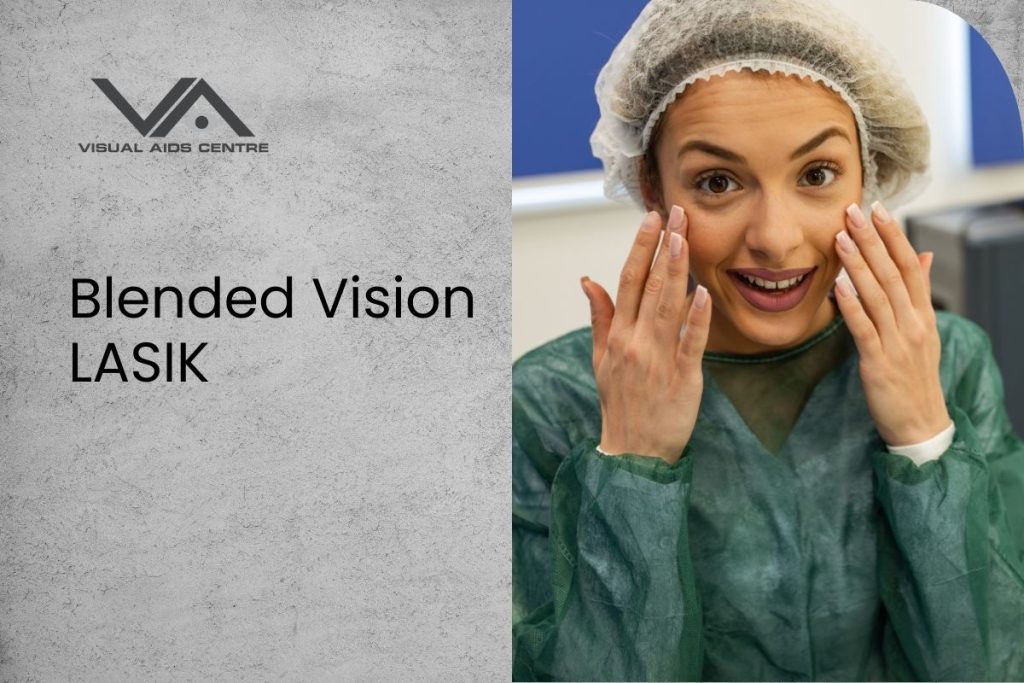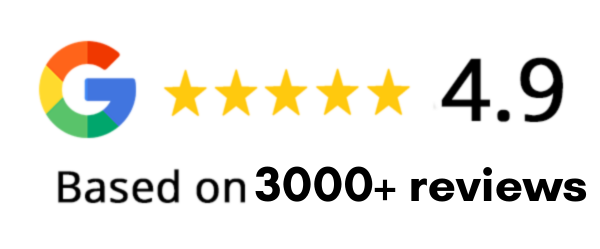Table of Contents
Toggle
The search for better vision has brought about big changes in eye surgery. Blended Vision LASIK is a new method aimed at fixing vision issues linked to presbyopia.
This cutting-edge surgery changes the cornea, the clear front part of the eye. It uses excimer lasers to fix vision problems. It’s a great option for those wanting to see better and use glasses less often.
What is Blended Vision Lasik?
Blended Vision LASIK is a cutting-edge LASIK procedure. It corrects one eye for distance and the other for near vision. This uses the brain’s ability to adapt. It’s a promising way to treat presbyopia, reducing the need for glasses or contact lenses.
This method relies on the brain’s skill to merge images from each eye. By adjusting one eye for distance and the other for near, the brain learns to combine them. This results in clear vision at different distances.
How Blended Vision LASIK Works
The surgery customizes LASIK for each eye. The laser reshapes the cornea based on a specific vision plan. The aim is to balance the two eyes, allowing the brain to blend the images smoothly.
Blended Vision LASIK is great for those with presbyopia. It tackles the problem of near vision loss. Knowing how it works helps people choose the best treatment for their presbyopia.
Benefits of Blended Vision Lasik
Blended Vision Lasik does more than fix your vision. It improves your life by solving vision problems for good.
This method corrects presbyopia and other vision issues. It lets people see clearly at all distances, without needing glasses or contacts all the time.
Reduced Dependence on Visual Aids
Blended Vision Lasik cuts down on the need for reading glasses or bifocals. It makes everyday tasks like reading, driving, or watching TV easier.
It’s great for those who hate dealing with glasses or contacts. It offers a lasting, easy solution.
Also, Blended Vision Lasik has a quick recovery time. Patients can get back to their usual activities fast. This, along with the long-term vision improvement, makes it a top choice for vision correction.
Looking for “eye surgery near me” can be overwhelming. But knowing the benefits of Blended Vision Lasik makes choosing it easier. It shows it’s a great option for fixing vision problems.
Ideal Candidates for Blended Vision Lasik
The best candidates for Blended Vision Lasik have presbyopia and other vision problems like myopia, hyperopia, and astigmatism.
They should have stable vision. This means their glasses or contact lens prescription hasn’t changed much in a year.
Key Characteristics of Ideal Candidates
Good eye health is key. They should not have serious eye diseases like cataracts, glaucoma, or age-related macular degeneration.
- Stable vision with minimal prescription changes over the past year.
- No history of serious eye diseases or conditions.
- Age typically between 40 and 70, as presbyopia commonly affects this age group.
- Realistic expectations regarding the outcomes of the procedure.
A detailed eye check by a skilled Lasik surgeon is needed. The surgeon will look at presbyopia and other vision issues, plus the eyes’ overall health. This helps people figure out if Blended Vision Lasik is right for them.
The Blended Vision Lasik Procedure Explained
Understanding the Blended Vision Lasik procedure is key for those thinking about it. This advanced LASIK technology involves several precise steps to fix vision issues.
The first step is creating a thin flap on the cornea. This flap is then lifted to expose the tissue underneath. The tissue is reshaped using an excimer laser.
The laser technology makes precise adjustments to the cornea. This corrects vision problems. Blended Vision Lasik corrects one eye for distance and the other for near vision.
This method lets the brain combine images from both eyes. This results in clear vision at different distances. The laser treatment itself is very quick, lasting just a few seconds.
But the whole process, including prep and recovery, takes about 30 minutes per eye. After, the flap is put back, and the cornea heals naturally.
The Blended Vision Lasik procedure is known for its precision and comfort. It’s a popular choice for those looking to improve their vision.
Recovery and Aftercare Post-Surgery
After Blended Vision Lasik surgery, you need to follow a few key steps for healing. Most people can go back to their usual activities in a day or two. This quick recovery is important for the best results.
Right after surgery, you might feel some discomfort, dryness, or light sensitivity. These feelings will go away in a few days. To make your recovery smooth, it’s vital to follow your ophthalmologist’s post-operative care instructions.
Using eye drops as prescribed helps keep your eyes moist and aids in healing. Avoid heavy lifting, bending, or rubbing your eyes for a few days. Also, don’t miss your follow-up appointments with your ophthalmologist. They are key to checking on your healing and solving any issues.
Tips for a Smooth Recovery
To make your recovery better, rest your eyes often. Stay away from dusty or smoky places. Wear sunglasses with UV protection when outside. By doing these things and following your doctor’s advice, you can avoid side effects and enjoy the benefits of Blended Vision Lasik.
Using a Lasik cost estimator can help you plan financially for the surgery and aftercare. Also, seeing a qualified ophthalmologist who offers full services ensures you get the best care during recovery.
Potential Risks and Side Effects
Blended Vision Lasik is a very effective procedure. But, it’s important to know the possible risks and side effects. Like any surgery, there are some complications that can happen, but they are rare.
Some side effects include dry eye. This is when your eyes don’t make enough tears. It can cause discomfort and affect your vision. Another side effect is halos or glare around lights, which can be a problem at night. It might make it hard to drive or do things in the dark.
Common Complications
Regression is a risk, where your eye goes back to its original shape. This is more likely in some people. Also, you might not get the vision correction you hoped for. It’s key to talk to your surgeon about these risks to understand how they might affect you.
- Dry Eye: Insufficient tear production leading to discomfort and vision issues.
- Halos and Glare: Visual disturbances around lights, especially at night.
- Regression: Possible return to the original vision state post-surgery.
- Under or Over Correction: Not achieving the desired vision improvement.
- Infection: Risk of infection post-surgery, though rare.
Most complications can be managed with good care and follow-up. New Lasik technologies like SMILE PRO and skilled surgeons help reduce these risks. It’s important to follow the post-operative instructions carefully for the best results.
Knowing the risks and side effects helps you make a smart choice about Blended Vision Lasik. It’s about weighing the benefits against the risks. Being aware of what to expect can make your surgery experience better.
Conclusion: Is Blended Vision Lasik Right for You?
Blended Vision Lasik is a promising option for those tired of glasses or contacts. It’s becoming popular for its convenience and freedom from eyewear. This method could be just what you need for better vision.
Before deciding, talk to a skilled LASIK surgeon. They can check if Blended Vision Lasik is right for you. Look for the Best Lasik surgeon to find the right expert.
Choosing Blended Vision Lasik means better vision and less need for glasses or contacts. With the right help, you can make a smart choice. Start your journey to clearer vision with Blended Vision Lasik.













